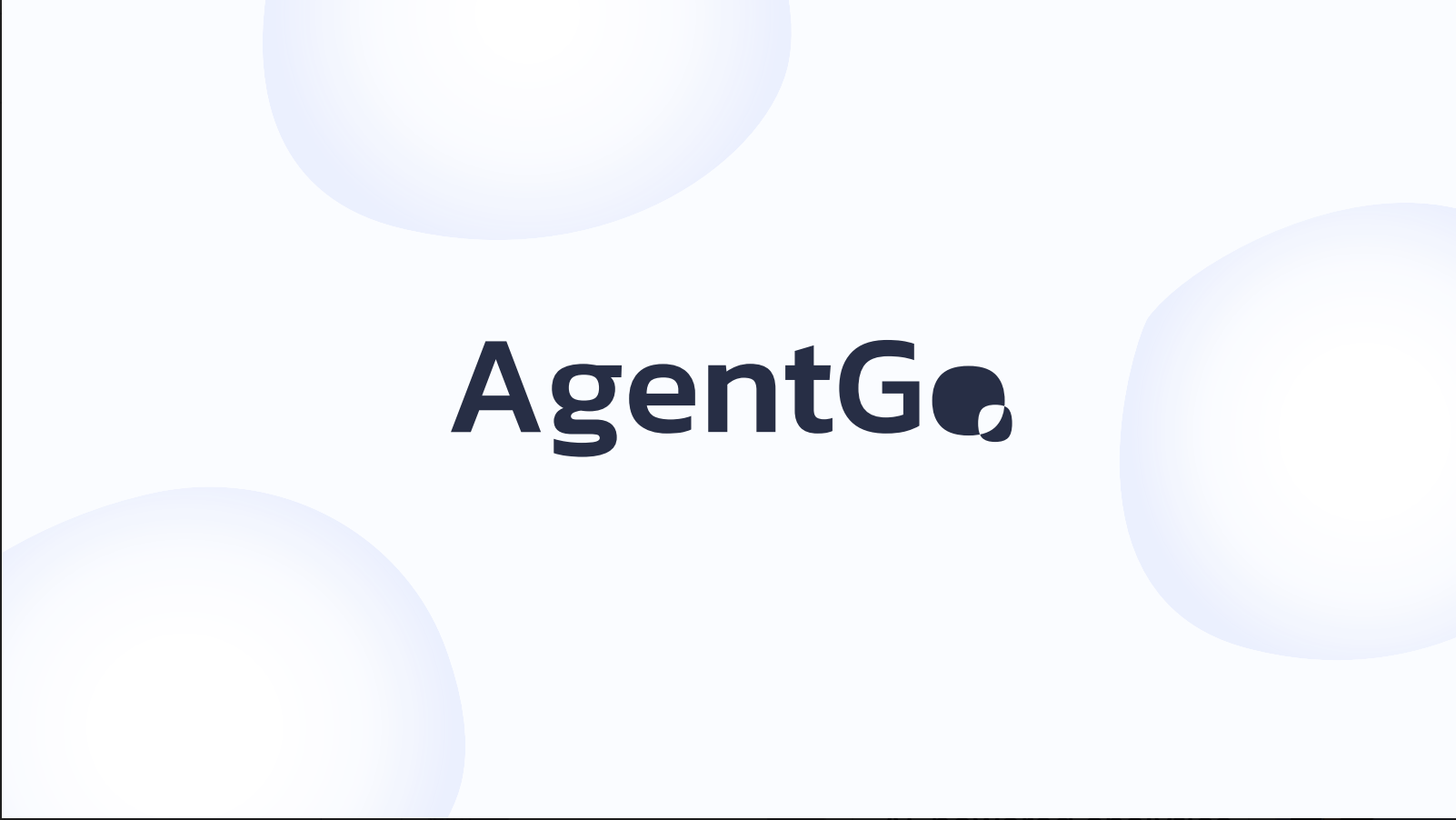I’ve come across dozens of articles up until now, promising me to deliver 10, maybe 20 or even 100 bulletproof tactics and strategies for real estate marketing.
These tactics include, but aren’t limited to:
- Facebook Ads
- LinkedIn Ads & Organic Outreach
- TikTok Video Marketing
- Website Blogging
- SEO & Content Marketing
- Google Ads
- Facebook Ads
- Email Marketing
Don’t get me wrong. Each one of these articles and the tactics mentioned in them was valuable and focused on helping realtors build their brands effectively and generate high-quality leads online the right way.
But the biggest issue here is that most successful agents simply don’t have time and money to implement each one of the tactics.
The key to success is choosing the right mix of tactics that fit your market, target audience and business goals. Once that’s done, you need to decide how to prioritize and start implementing them sequentially.
In this article, I’d like to share one of our client’s real estate marketing case studies, mentioning details about how we identified marketing goals and developed a winning strategy by coming up with the right mix of tactics.
Alongside this, we will be proceeding towards learning how we implemented this strategy and shifting our focus towards the astonishing results we came across. Let’s begin.
As I always say, there’s no one size fits all solution for any long-term marketing strategy. Different real estate professionals have different goals, different target audiences, resources and time frames.
Despite all of the differences, the framework for creating a marketing strategy is always the same.

The above-displayed image represents the framework I am talking about. I will walk you through this Real Estate Case Study, right from platform audit until the results evaluation stage.
- Platforms Audit
- Define Business Goals
- Set Marketing Goals
- Creating a Marketing Strategy
- Set KPIs
- Evaluate the Results
Let’s dive in!
Platforms Audit
Before we start defining our business goals, it’s always recommended assessing the current situation.
We should clearly understand where we are at to define a scope of work with realistic timelines.
Let’s take a look at all marketing platforms.
Our platform audit consisted of the following elements:
- Website
- Social Media
- CRM (have it or not, how it’s been used)
- Marketing platforms, advertising (Google Ads, Facebook, Adform, Twitter, etc.)
Website
In our case, the agent had an outdated website, without any relevant content and listings on it. Google Analytics showed insignificant traffic from Organic Search and a great deal of direct traffic.
A good amount of direct traffic to the website indicates increased brand awareness. It means people are typing in your URL directly on their browsers. Most probably, your existing clients are already looking forward to getting in touch with you.
In our experience, 25-35% of website visitors looked at the website as a credibility gauge.
An outdated website will damage your brand and make it difficult for you to build an online pipeline of clients.
A website is one of the key elements of online success.
All our strategies are built around VALUE for the clients, and your website is a great place to provide additional value to your customers.
Listed below are the benefits of having an outstanding website:
- Source of Listings
- Source of Knowledge (Market Analysis, Educational Content)
- Credibility Gauge (Reviews, Testimonials)
Think of an outdated website as heading over to a client meeting with dirty clothes on.
It doesn’t mean you won’t be able to win them over, but you will find closing them to be way tougher.
Don’t forget that your online leads have no idea who you are and what’s your worth.
Website and social media are a few of the most effective digital channels that will help you establish your brand and communicate your value.
That’s the reason; it’s vital to focus on your website and give it a bit of refreshment, before proceeding towards your lead generation efforts.
Social Media Channels
There’s no point in creating your profiles on different social media platforms unless you are active on them and interact with your audience on a regular basis.
Agents not being active is quite common. That’s because they aren’t just busy with their daily activities, but they tend to establish their dominance on many platforms all at the same time.
Facebook Business Page is an essential part of any strategy that’s built around Facebook Ads.
Tons of users gauge the credibility of a business through social media. Your audience, prior to doing business with you, will always look for social proof.
Here’s what people usually look for the most:
- For how long have you been in the business?
- How successful have you been up until now?
- How transparent are you?
In our case, Facebook page appeared completely empty:
- No recent Posts
- Less than 100 likes on the page
- No client engagement on the page (Client engagement, in our digital world, is referred to as “Social Proof”)
Facebook Business page should be optimized prior to running paid campaigns.
Google My Business
We have a verified Google My Business account, which is already a win.
But, few of the negative points were the lack of visual content and limited reviews.
Google my Business is an essential part of local SEO. And that’s why one of our main aims is to improve presence on that platform.
After penetrating the market of social media platforms with products such as Google+, Alphabet (the parent company of Google) focused on developing Google My Business as a social media platform.
And that’s exactly why we believe that it’s the future.
Opportunities on Google my Business:
- Business Info
- Reviews
- Messages (They can be used as a direct way to contact you right from google)
- Pictures
- List of Services
- Website
Google my Business will pop up whenever someone searches your name on Google. Hence, it’s important to build a great image and appear as an active business that’s reliable and credible.
We always put a lot of emphasis on visual content, and Google my Business isn’t an exclusion.
We added in a couple more relevant images to the Google my Business Profile.
On top of this, we asked our agent’s past customers to leave their valuable feedback, which helped us even further.
CRM
In our case, we didn’t have any CRM. Our client just had another one of those Excel sheets to store the client’s information.
We can’t build an automated marketing pipeline of clients without a place where we can efficiently store and keep track of all our contacts.
CRM implementation should ALWAYS be included in the strategy.
Most CRMs, nowadays are directly connected with websites and advertising platforms.
Besides their outstanding storage capabilities, CRMs serve as email and text automation tools.
You can read more about DESA CRM here.
Email Follow-Up
As you can see in the above-displayed image, you will be able to learn that all of our contacts from Website Web Form submissions and Facebook Lead Gen form submissions are collected in the CRM. Then we proceed towards automated communication through email and lead nurturing.
Previously, no email automation or drip campaigns were created.
All emails were being sent manually through Gmail.
We had thousands of contacts in Excel that we used for email sequences. The biggest challenge was to segment the contacts because usually, we don’t send the same message to everyone since it comes across as spammy.
We had to prepare different segments in our CRM.
We created individual segments, based on the property type, deal or price range.
Then we tailored more personalized email sequences for each of these segments.
Marketing Platforms
Client’s previous Facebook and LinkedIn campaigns were not successful.
We couldn’t figure out the reason behind the failure because data was incomplete.
Without accumulating leads in a CRM with attached sources to them, we can’t evaluate past marketing efforts.
Our marketing platforms were not connected to the website through the pixels which means there was no data being recorded.
Note: After revamping the website, we installed tracking and connected marketing platforms to the CRM.
Note: It is important to run campaigns from your own accounts. This will help you ensure that you are the owner of your data. Nowadays, data costs a lot of money. You can build more accurate audiences and improve your targeting for future campaigns.
In case you are starting right from scratch, any paid media channel will gather data for some time before it effectively starts to generate significant results.
Avoid this: Many real estate professionals make the mistake of allowing marketers to run campaigns from their own accounts. Make sure to keep data in-house because in case you want to move your account to another marketer, you’d be able to keep the data.
Audit Conclusion
We can conclude that the business had low credibility online, which means any further lead generation efforts brought us low-quality leads and caused a lot of media waste.
The only way to generate warm leads online was to build a robust brand. Give people a chance to get to know you and your business before they get in touch.
We have to build a foundation before we start introducing your brand to new people who haven’t heard of you before.
Scope of work:
- Website Revamp
- Google My Business – pictures, reviews
- Facebook Refreshment – posts, descriptions, pictures, reviews
- CRM
- Implementation
- Exporting Contacts
- Segmenting Existing Contacts
- Creating Email Sequence for Each Segment
Define Business Goals
The Coliseum wasn’t built in one day. And neither will your business. The biggest mistake you would be making is setting unrealistic goals and expectations for our business.
In our case, setting clear business goals helped us create a roadmap and determine the level of investment (time and money).
To set our goals, we asked ourselves:
- How many additional clients do we want per month?
We had to be realistic while answering this question. I’d advise you to be as well.
Think of how many additional clients you can process without decreasing the quality of your service.
Additional leads will require time spent on closing/talking with them. The lead generation is only a first part of the user journey, then nurturing comes into play. Especially in the beginning, it will eat your time.
Let me show you an example of a sales pipeline so you can get an idea of how many leads you have to work through and estimate the time required.
From the above-displayed table, you can conclude that in order to generate 20 additional clients, you’ll approximately need to work through 360 leads.
Our annual closing rate was approximately 5%.
The short-term closing rate is all about closing the clients the same month that they express an interest. Long-term conversion rate refers to closing clients over time through follow-ups using your new CRM.
In our case, we decided to focus on high-quality leads and set a target to generate 2-3 additional clients a month. We limited the number of additional leads to 30 a month.
- What is the time frame to achieve this goal?
For realtors who start from scratch, we suggest that you should give marketing a shot for at least 3-6 months before you expect any results, depending on your market conditions.
We expected to witness our first phase of results after the second month of our marketing activities. But the peak should begin after the 6th month.
Marketing takes time. It’s not easy reaching out to a certain number of impressions. You have to let people get to know you.
In our experience, it took up to 16 touch points online before people started recognizing your brand. What this means is that we showed our ads 16 times to the same person before he/she considered us.
We decided to set the time frame to 12 months when we should be able to reach the goal of 20 clients.
As you can see, our time frame is set based on the number of desired clients and closing rates estimations + number of leads we are able to process every month without quality decrease.
- How much do we have to invest?
Given the time frame and the number of leads we had to generate, the estimated budget was 2,000 a month. Annual investment cost was $24,000.
Set Marketing Goals
We estimated our revenue, based on the median home selling price. Median home selling price is $500,000 and commission is 2.5%.
Marketing goals have to be connected to business goals. Ideally, these goals have to be reflected in clear marketing KPIs (Key Performance Indicators).
KPI examples:
- Website sessions
- Page visits
- Form submissions
- # of Followers on Social Media
- # of Comments
- Leads
- Cost per Lead acquisition
The KPIs mentioned above are just a few of many different metrics that you can use to keep the marketing performance in check and change the strategy if needed.
These KPIs will vary depending on business goals and objectives. Keep in mind that they are not set in stone. You can and should always look at them critically if they are a reflection of your business.
We revolved our marketing goals around the number of contacts we had to generate by the end of the year.
In the above example, you can see real estimations of how many Leads, Contact Page Visits and Website Visits; we needed to generate 20 real estate clients. You can use these estimations for your business as well.
In this case, the KPIs are:
- Clients – Closed Deals
- Revenue
- Leads – Names + Contact Information in the CRM
- Contact Page Visits – Unique people visited the contact page where you can submit a form or click a button to make a phone call
- Website Traffic – Google Analytics sessions which reflects the number of not unique visitors on the website
Location: New York is a very competitive market for Real Estate agents, which means leads can cost quite substantial sums of money.
Target audience: Residential home buyers/sellers (we don’t have exact demographics). Preferably houses above the median price (500,000$ +). Knowledge of the median price helped us define our audience online and customize appealing “call to actions.”
When a Real Estate agent doesn’t know his/her exact audience, we always suggest him/her start with very broad targeting and then narrow it down, based on received data. The KPIs are the key factors when we evaluate the performance.
Marketing Goals: When we set our marketing goals and KPIs, we made assumptions of the conversion rates. I’d suggest you calculate the worst-case scenario.
Conversion rates:
- What percentage of the overall visits end up on the Contact Page (ultimate goal on the website where people submit the form)?
- What percentage of people that we reached through ads submitted the form?
- How many people were we able to reach out to and gave them a presentation?
Create a Marketing Strategy
Website Revamp
The essential pages we decided to include in the redesign:
- Homepage
- ALWAYS include: Value proposition (why you’re the right choice, what your website can bring in additional value), clear Call to Action button (what visitors should do next), Target audience (who is your ideal customer)
- Why Me – Contact page with some additional information about the realtor and social proof (testimonials, google reviews, social media links, etc.)
- Market Insights/Updates – Value section which can help us keep our potential customers and develop industry leadership
A simple and clean WordPress template helped us easily shuffle things around and add new elements to the website if needed.
HOW TO CHOOSE A WEBSITE PLATFORM FOR REAL ESTATE
WordPress is the most flexible platform, which potentially can fit the needs of any realtor. The disadvantage is that you most likely will need a professional digital marketer to help you manage this platform.
Google My Business
As I mentioned in the audit part, we need to add reviews and some visuals to our Google my business page. It will help you validate your credibility online because that’s the first thing that’ll pop up online when people search for a Real Estate agent.
Considering that in our case, this strategy is for a solo agent, we have capacity limits; realistically we can keep engagement on a single platform only.
We decided to use Facebook. It was the main source of leads.
I’d suggest you read this article to find out why Facebook is the most powerful platform to generate real estate leads.
Facebook advertising includes three placements (where your ads will be seeing):
- Facebook messenger
When people see your ads, they have multiple user journeys that they can take:
- They submit a form. We directly receive the contact information of the potential customer.
- They click on your Facebook business page.
- They check your website and look for other social media platforms to validate you.
Based on user journeys listed above, successful lead gen campaign requires a foundation; there are three elements to it:
- Ads Quality: We decided to use video ads as much as possible since they bring significantly better ROI
- Website Redesign: Provide value on the website
- Facebook: We preferred to show that we’re active on Facebook by posting new pieces of content. You can always just curate content if you don’t have time to create your own. In our case, we decided to curate most of our content.
Google Ads
Google Ads is a very expensive advertising channel for Real Estate agents. Therefore, we’d advise you to use it carefully. We will be using this platform for remarketing purposes ONLY. We will be showing our ads to everyone who visited our website to keep our brand on top of their minds.
CRM
We have a separate book with the CRM capabilities that are helpful for real estate agents.
Some CRM features we have to see in our strategy:
- Customer Segmentation: Buy/Sell, Condo/House
- Email Sequences for Each Segment (90 days each)
- Pipeline Visualization
- Text Messages Follow-Ups
- Agent Notification System (When potential customers perform some action)
Strategy Conclusion
In the above-schema, you can see how all the channels are interconnected through the website.
- Website is in the middle of the strategy. It provides value and establishes credibility.
- Facebook drives traffic to the website and generates leads directly, we will have two types of campaigns
- Google Ads remarket to people who already visited the website.
Email marketing is a part of CRM and helps us to nurture leads.
Results
Facebook results
As you can see from the screenshot above we were able to generate over 340 luxury buyer leads. Over 15,000 people interacted with the ad. The high CTR (Click-Through-Rate) shows ad relevance to the selected audience.
Website Results
We overachieved the estimation of 15,000 visitors on the website, by the end of the year, we got 21,538 visits (sessions).
16,366 were new users who never visited the website before.
Based on our estimations above, first real significant results were witnessed during the third month. It takes time to gain the trust of your target audience.
Broad Targeting
As you can see in the screenshot above, initially during the first two months, we were receiving a lot of traffic on the website (May – June).
We were targeting the city very broad to find the most responsive audiences. If you’ve never ever run marketing campaigns, I suggest you start with broad targeting and then narrow it down over time.
Optimization
In the next two months, we focused on adjusting targeting. You can see how website traffic decreased during this time (July – August). Despite the decreased website traffic, we started receiving more contact page visits and form submissions. What this means is that our targeting adjustments were working. Any real estate agent who has ever run Facebook ads knows staying broad for too long isn’t a good idea because you’ll eventually get tired of low-quality leads.
Note: In the meantime, you shouldn’t go narrow right away because you might miss out on the opportunity to discover high rewarding audiences.
Narrow Targeting – Conversion-Focused
Since September, we focused on performance (September – November). Our traffic became stable, and we started getting stable traction of contact page visits and form submissions.
At this stage, we could leverage the audience of people who respond to our ads best. We were changing ads every two weeks, so people didn’t get tired of the same creatives.
In the above-displayed chart, you can see how unique contact page visits increased over time. Despite a dramatic decrease in overall website traffic (chart above), people become more interested in working with the realtor. As you can see, the first contact page visits started in the third month of our marketing efforts.
Around September, contact page visits became stable. Even despite the COVID-19 lockdown, the realtor was receiving a lot of interest from buyers/sellers. People were searching for help and considered the client as a local expert.
Conclusion
Building a real estate brand right from scratch takes time. You shouldn’t expect any significant results in the first two months of running marketing campaigns.
There are tons of factors that may affect your marketing results:
- Your Content
- Website Quality
- Social Media
- Quality of Your Ads
- Right Targeting
People will NOT submit a form or call you right away after seeing your ads. You will come across people who are super cold and wouldn’t pick up a phone and respond to your messages. You will be wasting a lot of time on follow-ups.
Your audience will check your social media, website and content.
Don’t assume that basic “GET FREE HOME EVALUATION” ads will generate great results. Too many realtors are using them already. Be creative and try to come up with a unique value proposition.


![[Research] How homeowners and housebuyers choose real estate agents](https://www.desa.ninja/wp-content/uploads/2022/07/Real-Estate-Research.png)

